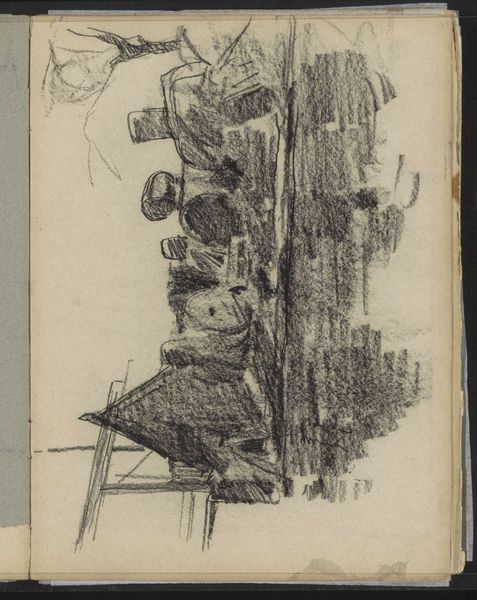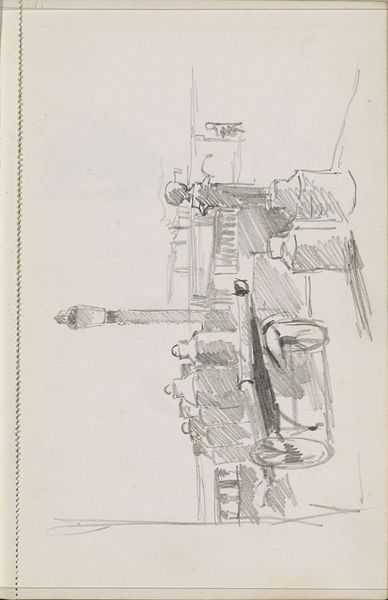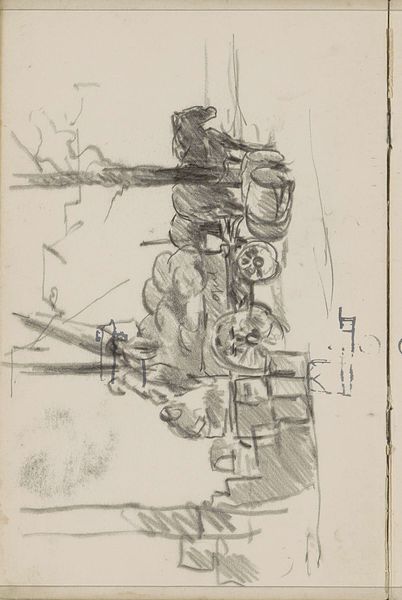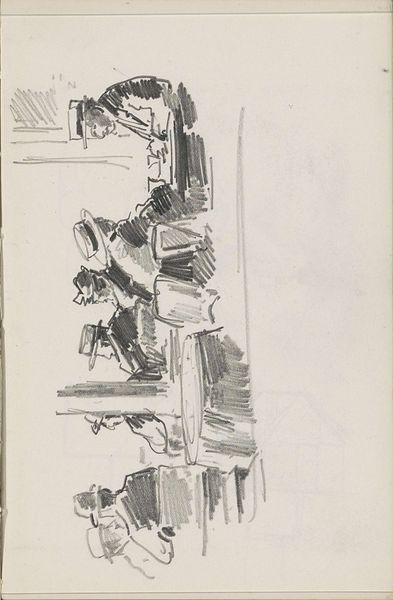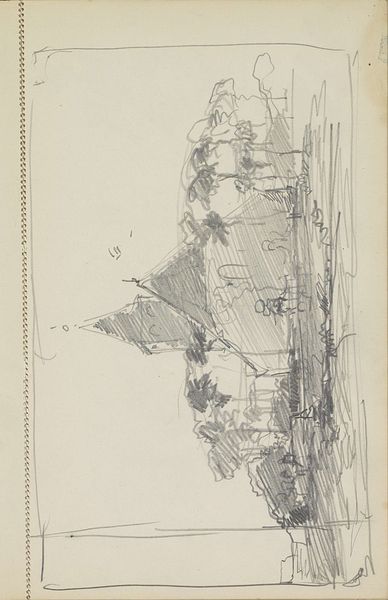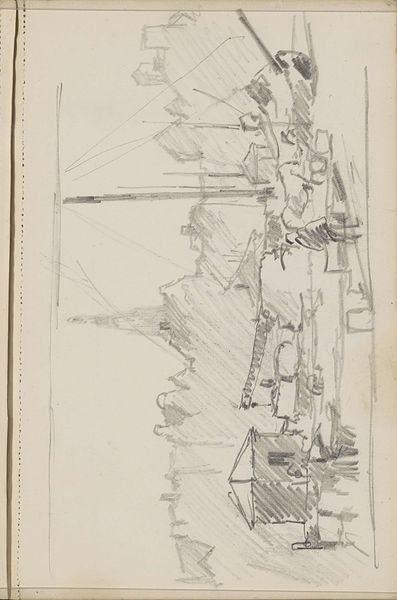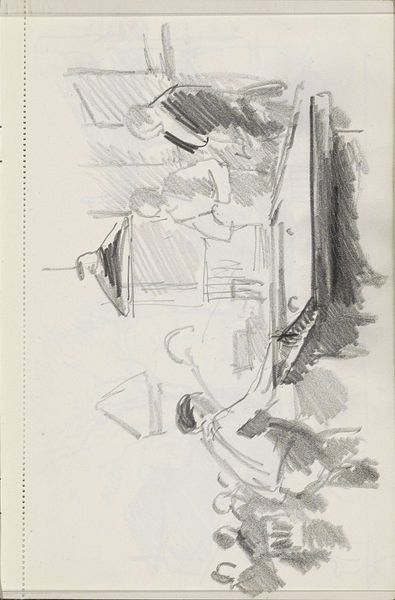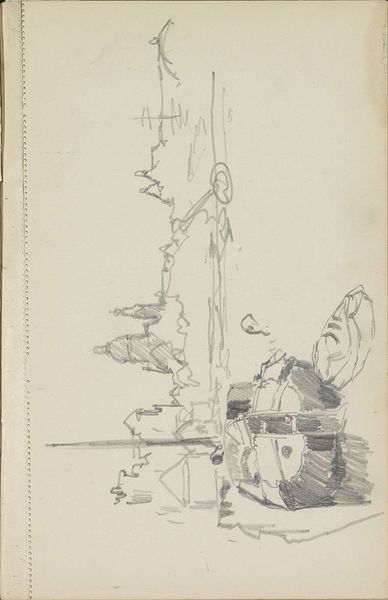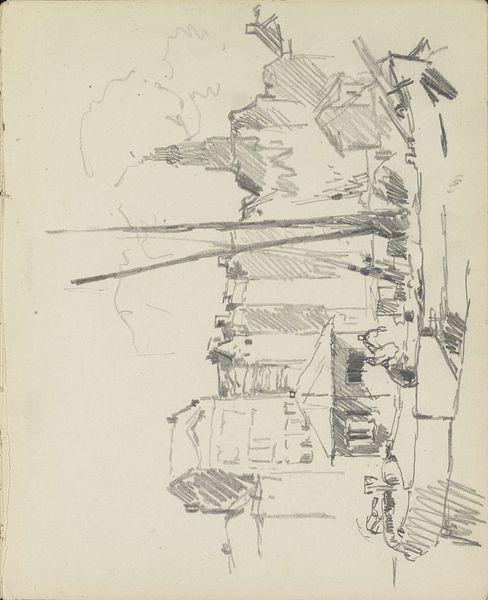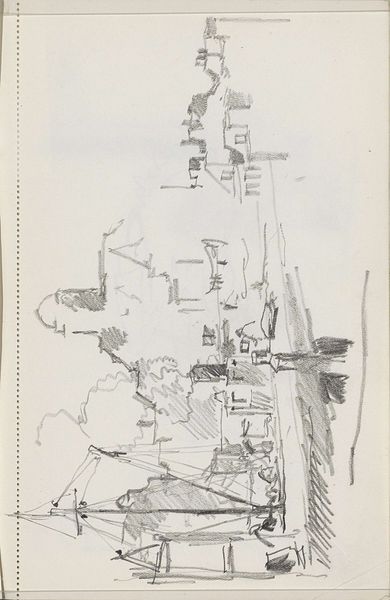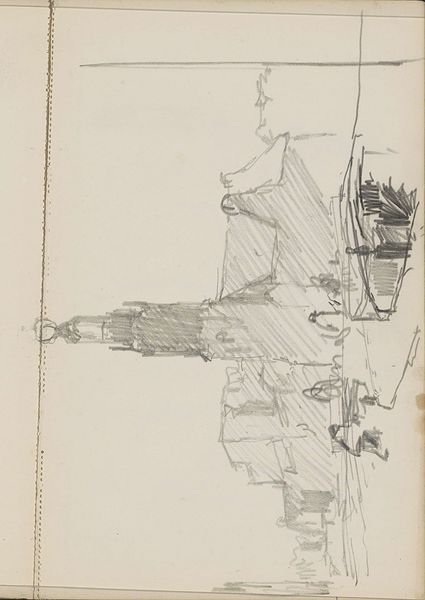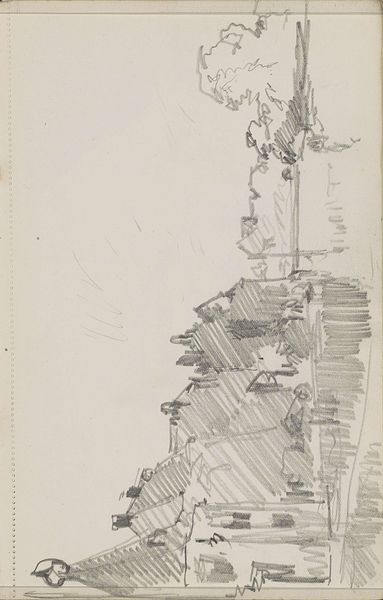
drawing, pencil
#
drawing
#
pencil sketch
#
pencil
#
cityscape
#
realism
Copyright: Rijks Museum: Open Domain
Editor: Here we have Cornelis Vreedenburgh's pencil drawing, "Ronde Lutherse Kerk aan het Singel te Amsterdam," created sometime between 1890 and 1946. It’s a rather understated cityscape, a quick sketch almost. What catches your eye about this piece? Curator: What I find compelling is how this seemingly simple sketch can unlock a conversation about the role of religious architecture within urban development and social identity. The Lutherse Kerk, built during a period of religious and political negotiation in the Netherlands, speaks to themes of tolerance, power, and community. Have you considered how the act of sketching, as opposed to a more formal painting, reflects Vreedenburgh's own position in relation to these institutions? Editor: I hadn’t really thought about the sketching medium as being politically charged. So you're saying that choosing a quick sketch might be a statement in itself? Curator: Precisely. Realism, especially in depicting urban landscapes, often implies a critical observation of the social structures embedded within those spaces. How might Vreedenburgh’s artistic choices - the medium, the composition focusing on the church, the time period, contribute to our understanding of Amsterdam’s social landscape at the turn of the century? And, consider how access to that landscape might have varied across lines of class and social identity. Editor: That gives me a lot to consider! The sketch now seems like a starting point, an invitation to think about the social and political undercurrents of Amsterdam at that time. Curator: Indeed. And that’s where the real conversation begins. Art provides us with that mirror reflecting historical contexts, inviting us to consider social justice issues of past and present.
Comments
No comments
Be the first to comment and join the conversation on the ultimate creative platform.
